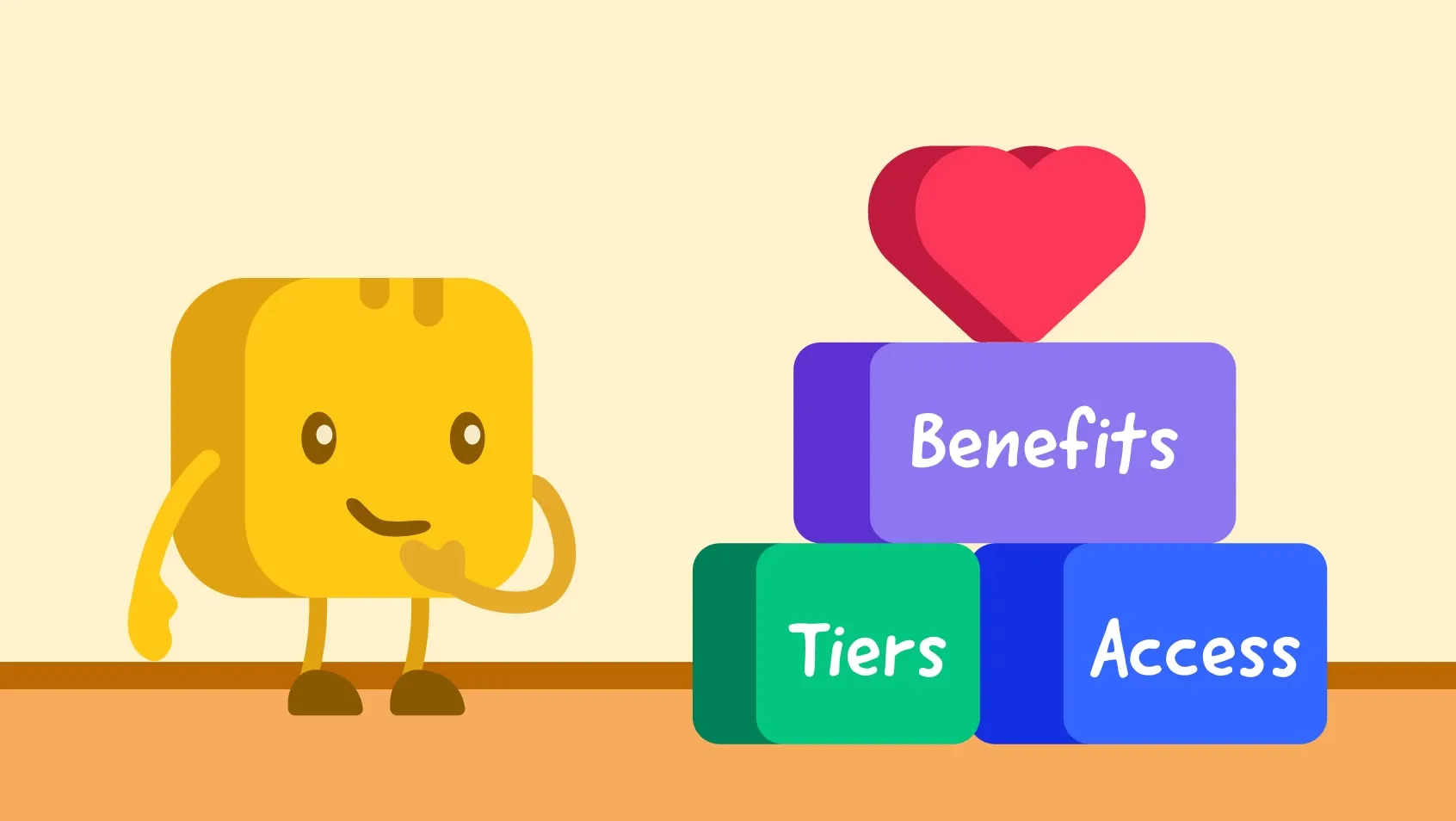Table of contents
Table of contents
Fundraising calendars help nonprofits visualize exactly how their annual fundraising plan will play out throughout the year, including deadlines, budgets, and team member responsibilities.
In this article, we'll discuss how to create your own fundraising calendar—plus, we’ve got a free fundraising calendar template to get you started.
Key sections of a fundraising calendar
After creating your annual fundraising plan, it’s time to develop a fundraising calendar to map out exactly how you’ll implement your strategies throughout the year.
The layout of your fundraising calendar is crucial. Make sure to split the calendar into months or quarters, whichever works best for your organization, based on key dates and fundraising goals. Then go through your fundraising plan and integrate the following seven elements into the calendar:
- Donor groups 👫
- Your SMART goals 🤓
- Fundraising activities (campaigns, events, appeals, grant deadlines, etc.) 🎩
- Donor communication plans ☎️
- Team member roles and responsibilities 🙋
- Income and expenses 💸
- Deadlines ⌛
1. Donor groups 👫
Your annual fundraising plan focuses on three primary goals:
- Increasing new donors 👋
- Retaining current and lapsed donors 🔃
- Upgrading experiences for all donors 📈
Your organization should add goals, fundraising activities, and donor stewardship strategies for each of these groups for each month or quarter.
2. Your SMART goals 🤓
After you set specific, measurable, achievable, result-oriented, and time-bound (SMART) goals for each donor segment, the question becomes: How will you reach your goals? Incorporating these specific benchmarks into your calendar will help you stay on track and increase your chances of success.
3. Fundraising activities 🎩
Fundraising events include recurring donor campaigns, peer-to-peer fundraising, donor surveys, and major donor outreach. Adding this section to your calendar lays a foundation for your communication plans and lets you know how far in advance to plan these activities.
4. Donor communication plans ☎️
Your supporters don't want to be treated like ATMs, so you must add different communication steps to your calendar. Donor communication can include surveys, acknowledgment letters, thank-you calls, and donation appeals.
For example, one of your goals is to increase recurring donor funds this year, so your calendar includes a fundraising activity like a recurring donor appeal. Under your communication plan, you’ll add steps such as:
- Develop membership benefits 💌
- Create a recurring donor landing page 🔁
- Launch online campaign 📲
- Send emails ✍️
- Post on social media 💥
5. Team member roles and responsibilities 🙋
It's time to decide who's in charge of each of your fundraising activities and communications with donors.
This includes board members, staff, volunteers, vendors, sponsors, and more. A RACI framework (responsible, accountable, consulted, and informed) can help clarify responsibilities and lines of communication, ensuring everyone knows their role and stays organized.
6. Your organization’s expenses and income 💸
Your annual fundraising plan will have expected income and expenses for each event and campaign, but your fundraising calendar can break these numbers down to show when funds will actually come in and out of your bank account.
For instance, if your annual gala is scheduled a few months into the year, but you have limited funds before that, you may want to prioritize looking for sponsorships.
7. Key dates and deadlines ⌛
Once you add specific fundraising activities to your calendar, you must also start adding specific dates like:
- Major holidays 🧑🎄
- Event dates 📅
- Grant deadlines ✍️
- Annual report deadlines 📃
- Times when your office is closed 🌴
How to create a fundraising calendar in four steps
Your fundraising calendar should evolve with your organization's needs and donor responses. Here are four key steps to creating a calendar that helps you stay on track and reach your fundraising goals.
Step 1: Set goals and objectives 🎯
Success starts with crystal-clear goals. Think of your fundraising calendar like planning a road trip—you need to know your destination before mapping the route.
To set your SMART goals, follow these steps:
- Review last year's figures: Look back at the numbers from your last fundraising year, such as the total amount raised, number of donors, average gift size, most successful events and campaigns, and donor retention rate. This gives you a realistic baseline for growth.
- Define your needs: Calculate what you really need to accomplish your mission. Consider funding to support program costs, operational expenses, emergency funds, and growth initiatives.
- Consider your capacity: Be honest about your resources, like available staff time, volunteer support, technology tools, and budget for fundraising activities.
Equipped with this information, you can move away from setting vague goals like "get more monthly donors" and toward something more concrete: "Recruit 25 new monthly donors giving an average of $30/month by June 30th."
Be sure some of your goals are non-financial, too (e.g., goals about donor acquisition, community awareness, etc.).
Step 2: Consider your fundraising methods 💸
With your goals in mind, consider what fundraising methods you’ll use to reach them. You might include options like:
- Peer-to-peer fundraising
- Special events
- Monthly and annual giving campaigns
- Grants
- Corporate partnerships
- Capital campaigns
- Planned giving campaigns
- Crowdfunding campaigns
Step 3: Set dates and times 🕜
Once you’ve determined what kind of campaigns you’d like to use throughout the year, it’s time to place them on the calendar:
- Begin with fixed dates: Mark non-negotiable dates first, including Giving Tuesday and year-end giving, your fiscal year dates, grant deadlines, awareness days for your cause, and any pre-existing commitments that can't be moved.
- Schedule major events: Place your largest, most resource-intensive activities (like galas, walks, or auctions) strategically throughout the year, with enough time for promotion, follow-up, and supporter engagement.
- Layer in campaigns: Plot your fundamental fundraising activities like annual appeals, monthly giving drives, and digital campaigns around your major events, ensuring they don't compete for attention or resources.
- Build in buffer: Create intentional gaps between campaigns to prevent donor fatigue, allow for staff recovery, and maintain flexibility for unexpected opportunities or emergency appeals.
- Map communications: Schedule your donor communications, including thank-you periods, newsletters, impact reports, and stewardship touches to maintain engagement between tasks.
- Include prep time: Work backward from each event or campaign launch to allocate time for development, production, and team coordination.
Step 4: Evaluate and repeat 🔃
Your fundraising plan is a living, flexible document. Regular monitoring, adjustment, and evaluation ensure it remains an effective tool for fundraising success:
- Create regular check-in points: Schedule consistent review times—weekly for quick progress checks, monthly for campaign assessments, quarterly for bigger-picture analysis, and annually for a more comprehensive evaluation—marking these directly in your calendar.
- Make adjustments: Implement informed changes to your calendar based on new insights, whether that means shifting campaign dates, adjusting resource allocation, or modifying outreach methods.
- Build for the future: Use your year-end evaluation to create a template for next year's calendar, incorporating lessons learned and successful timing patterns.
Download your free fundraising calendar template
Keep everyone on track to reach your fundraising goals throughout the year by breaking down each activity, detailing budget allocations, specifying team member responsibilities, and mapping out the communication plan month by month.
This fundraising calendar template provides a foundation for planning next year's fundraising efforts. To create an editable version of the calendar, go to File → Make a copy of the calendar fundraiser template. Now, you’re ready to make it your own!
Fundraising calendars FAQ
Need a few quick insights on fundraising calendars and how they can help your nonprofit raise money? We’ve got the answers!
What is a fundraising calendar?
A fundraising calendar is your nonprofit's master planning document that maps out all fundraising activities, campaigns, and donor communications throughout the year. Think of it as your organization's strategic plan (in calendar form!) that coordinates everything from major events and grant deadlines to donor communications and stewardship activities.
Why does my nonprofit need a fundraising calendar?
A fundraising calendar prevents the chaos of reactive fundraising by creating a structured approach to revenue generation and donor engagement. It helps distribute activities evenly throughout the calendar year, prevents donor fatigue, and ensures your team has adequate preparation time for each fundraiser campaign.
When should I create a fundraising calendar?
The ideal time to create your annual fundraising calendar is 2-3 months before your fiscal year begins, allowing enough time for thoughtful planning and team input. This ensures you can launch your fiscal year with a clear strategy while incorporating lessons learned from your current year's activities.
How often should I update my fundraising calendar?
While your fundraising calendar should be reviewed monthly for minor adjustments, schedule formal quarterly reviews to assess performance, make strategic adjustments, and accommodate new opportunities or challenges.
Make fundraising easier than ever before
A calendar is an excellent tool to lay out how you'll achieve your fundraising goals with activities, communication plans, team members, budgets, and key dates.
Make the most out of your calendar and reach your annual fundraising goals by using an all-in-one fundraising solution like Givebutter. With hundreds of features—including donation forms, P2P campaigns, donor management tools, and more—your nonprofit can crush your goals year after year.
Sign up for your free account today to see how Givebutter can make reaching your fundraising goals easy and fun.
.svg)






%20(1).png)


















